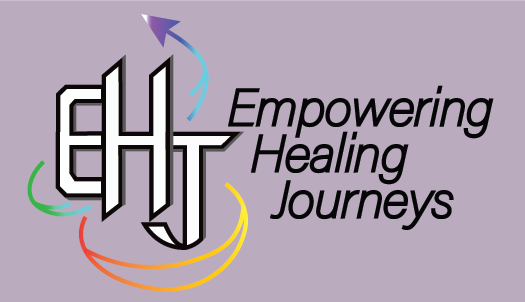I was introduced to the Feldenkrais Method® more than five years after a cycling collision with a car. Three and half years were spent in physical therapy (PT), where I was informed that my body’s ability to heal was limited to five years. Traditional PT didn’t work for me because I didn’t injure a joint or two; my entire body was injured. I had multiple “soft tissue” injuries, which are difficult to diagnose or treat. PT stabilized the pain, but it didn’t solve the root of the problem.
Physically, my ribcage was bruised and collapsed. The left side of my central diaphragm was partially functional. Tendons that connect muscles to bones in my spine, left arm and shoulder blade, neck, and pelvis were displaced by the impact of the car. Unlike muscular pain which I was familiar with, my pain was “structural”, constant and independent of movement.
My body felt as if there was an internal tug-of-war between muscles that were trying to move the upper ribs and left shoulder blade back into place vs. muscles that were trying to unsuccessfully adapt to their new positions. The structural instability in my ribcage, pelvis and spine was maintained by involuntary chronic muscular contractions. In the middle of the night, my back muscles felt as if they were on the brink of tearing. My fifth PT described my muscles as “ropey”. This occurs when there is muscle fiber damage, inflammation, chronic tension, and formation of myofascial adhesions.
FUNCTIONAL INTEGRATION (FI®) LESSONS
Unlike PT, Feldenkrais Functional Integration (FI®) lessons didn’t cause more pain. The lessons are gentle, and the movements are slow. In the absence of pain, my muscles became less reactive, and my nervous system began to learn new movement patterns. When babies begin to explore movement, their bodies are soft not rigid; learning how to move is not painful but enjoyable. They learn how to coordinate their skeletons and muscles with gravity to move with their entire bodies. I felt better after each lesson and learned how to use my spine to walk again. I learned to use pain during my workouts to make minor adjustments in my body mechanics.
FI® lessons teach functional movement patterns that involve the whole body and identify clear relationships between structure and function. Concurrent osteopathic manual manipulation treatments realigned my bones and tendons and released fascial adhesions. These treatments facilitated learning new functional movement patterns that simplified and improved how I moved. I was discharged from the clinic after a year.
Structurally, I was stable enough to join a Feldenkrais® training program however, periodic osteopathic treatments were still necessary. In Feldenkrais® training programs, students are verbally guided to learn how to move their bodies by doing Awareness Through Movement (ATM®) lessons. Another part of the training program is to practice techniques with one another and learn how to create FI® lessons.
AWARENESS THROUGH MOVEMENT (ATM®) LESSONS
ATM® lessons develop one’s awareness to sense the body’s movement and location in three-dimensional space through the kinesthetic sense or proprioception. These lessons allow the nervous system to detect which muscles are necessary to perform a primary movement but more importantly, they uncover the unnecessary, background compensatory muscles that are habitually albeit unconsciously recruited. These extraneous muscular contractions compensate for movements that we are unable to do due to developmental deficits and/or physical/emotional trauma. They are adaptations that occur in reaction to pain, like jaw clenching, tensing the abdominals or neck muscles, etc., but they are non-functional “parasitic” patterns that eventually create problems elsewhere in the body if left unresolved.
One of my Educational Directors said, “One day, you won’t want anyone touching you. You’ll only want to do ATM® lessons to work on yourself.” Furthermore, he challenged us by asking, “Why do you want to go back to the way you were before your injury? Don’t you want to be better than that?”
ATM® lessons provide tools that empower students to take themselves out of pain. By improving how we use our bodies, the skeletal structure subtly realigns itself and background muscular tension subsides. Ultimately, how we routinely use our bodies establishes and maintains its structure. This is contrary to the popular belief that we need to build muscular strength to maintain the body’s structure.
HOW CAN FELDENKRAIS® LESSONS HELP YOU?
Feldenkrais® lessons teach students to listen to their bodies by developing their awareness. This enables the nervous system to learn and choose movement patterns that work harmoniously with the skeleton and gravity. Lessons require us to slow down and pay attention to how we use our bodies. They are not a quick fix. We can’t continue to use our bodies the same way and expect pain to miraculously disappear. By simplifying how we use our bodies, we learn how to release parasitic patterns that impair movement quality and/or range of movement and replace movement patterns that can promote premature deterioration of weight bearing joints.
Most of us take our mobility for granted until it is compromised. In my case, an accident triggered systemic functional and structural imbalances. Conventional PT could not solve the problem because it’s based on a medical model that is not designed to treat or balance the whole body. Even if only one joint of the body is injured, the model is inherently flawed because it attempts to rehabilitate the injured joint by isolating it from the rest of the body. This strategy works well for mechanical devices, but does not address restoring balanced overall function in complex, dynamic, biological beings.
Perhaps we need to reconsider that piecemeal rehabilitation of a person’s physical injuries over time goes hand-in-hand with the popular belief that stiffness and immobility are inevitable with age. In contrast, the Feldenkrais Method® proposes to preserve the suppleness and innate strength of our bodies and seeks to support our physical mobility and independence as we age.

